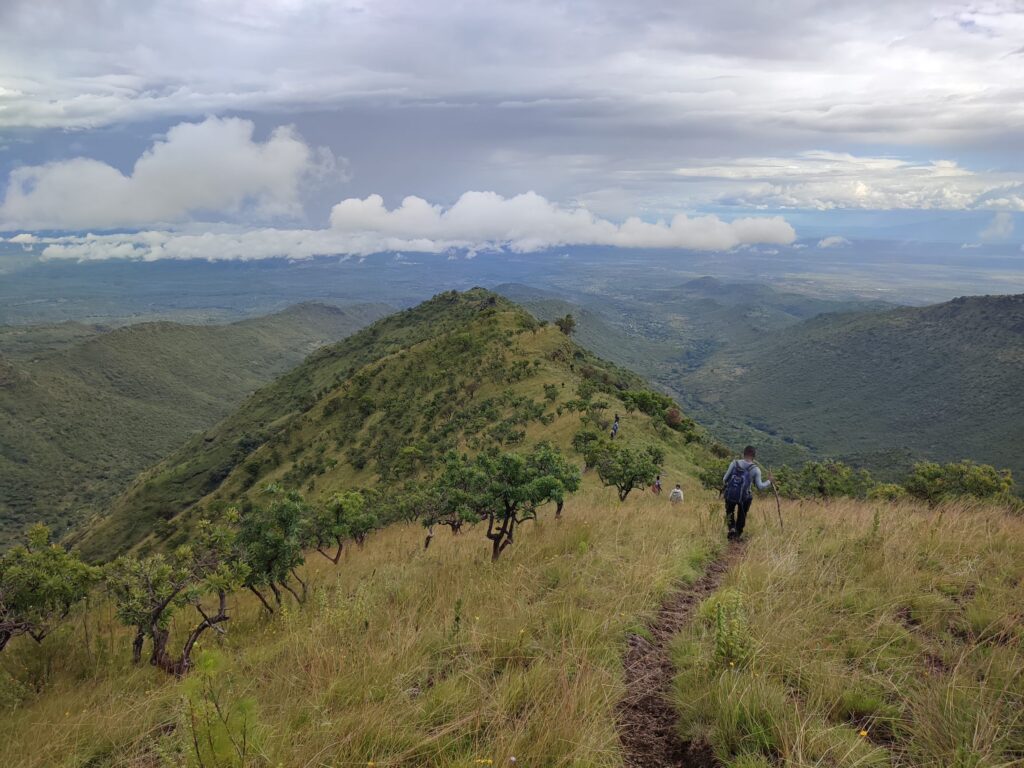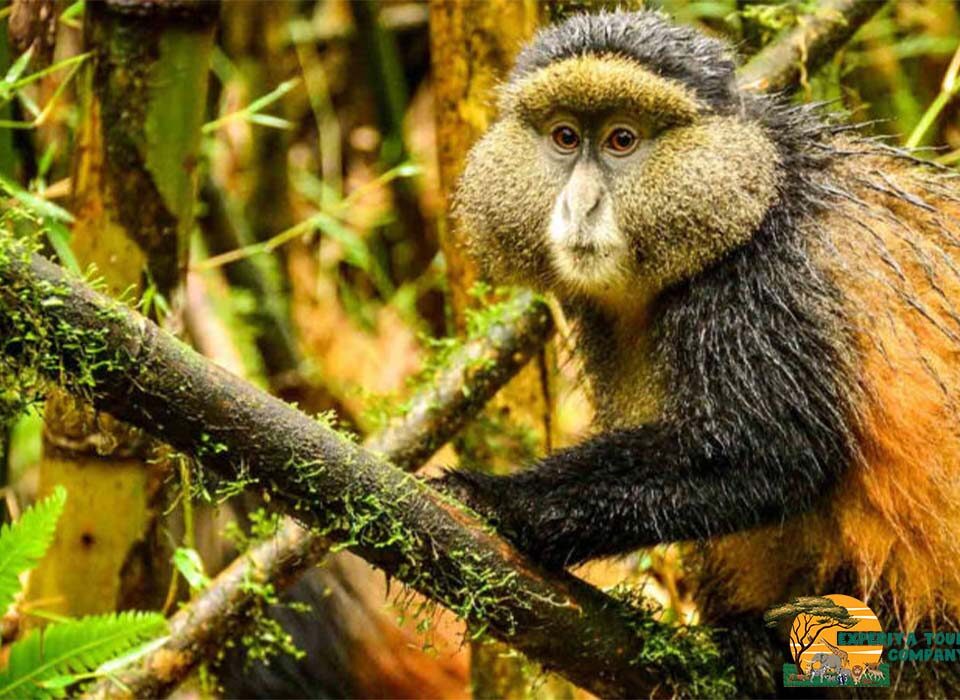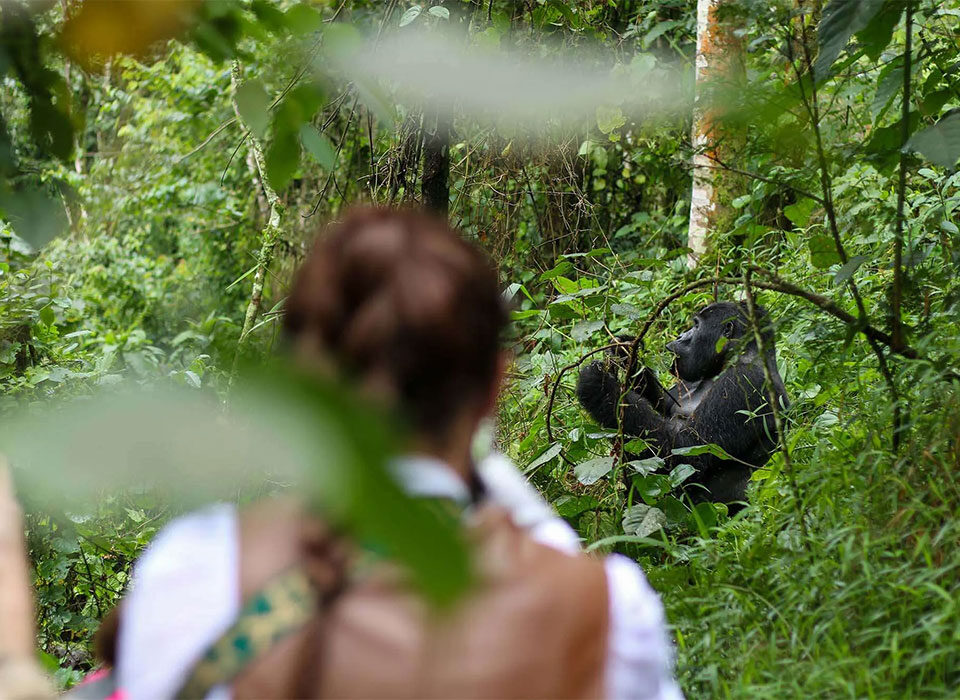
Can I Climb Mount Moroto in Karamoja – Hiking Uganda’s Hidden Highlands
October 25, 2025
Is Sipi Falls Worth Visiting – Discover Uganda’s Most Beautiful Waterfall Destination
October 25, 2025Best Hiking Trails in Uganda – Top Mountains & Nature Walks with Experiya Tour Company

What Are the Best Hiking Trails in Uganda?
Uganda — often called the “Pearl of Africa” — is a land of breathtaking contrasts, from mist-shrouded mountains to rolling savannas and tropical rainforests echoing with the calls of primates. While the country is best known for gorilla trekking and wildlife safaris, it’s also a paradise for hikers and nature lovers. From challenging volcanic climbs to serene forest trails, Uganda offers an incredible variety of hiking experiences for adventurers of all levels. Whether you want to conquer snow-capped peaks, explore ancient volcanic craters, or wander through lush jungles filled with birds and waterfalls, Uganda’s landscapes deliver beauty and discovery at every turn. In this guide, we’ll explore the best hiking trails in Uganda, what makes each one unique, and why exploring them is one of the most rewarding ways to connect with this beautiful country.
The Rwenzori Mountains – “Mountains of the Moon”
The Rwenzori Mountains, also known as the “Mountains of the Moon,” are the ultimate hiking destination in Uganda — and arguably one of the greatest trekking experiences in Africa. Rising along the border with the Democratic Republic of Congo, this UNESCO World Heritage Site is home to Africa’s third-highest peak, Margherita (5,109 meters).
The Rwenzoris are not volcanic like Mount Kilimanjaro or Mount Kenya. Instead, they are a block of uplifted rock, cloaked in dense rainforest, bamboo, and alpine moorlands. As you climb higher, the landscape changes dramatically, revealing giant lobelias, everlasting flowers, and glaciers — a surreal sight near the equator.
Central Circuit Trail (7–9 days): The most popular and scenic route that loops through the heart of the range, reaching Margherita Peak.
Kilembe Trail (6–8 days): A newer, slightly less crowded route offering spectacular views of glacial valleys and waterfalls.
Mahoma Trail (2–3 days): A shorter, moderate trek perfect for hikers who want to experience the Rwenzori beauty without summiting.
The Rwenzoris are challenging and best suited for experienced hikers due to altitude and unpredictable weather. However, the experience is unforgettable — traversing through clouds, glaciers, and pristine wilderness.
Mount Elgon National Park – The World’s Largest Volcanic Caldera
If you prefer a mountain adventure that’s less demanding than the Rwenzoris but equally rewarding, Mount Elgon National Park in eastern Uganda is a perfect choice. This extinct volcano, once higher than Kilimanjaro, now stands at 4,321 meters and boasts the world’s largest volcanic caldera, spanning 40 kilometers across.
Mount Elgon combines natural beauty, accessibility, and biodiversity. The trails pass through thick montane forests filled with monkeys and birds, open heathlands, and giant lobelia-covered slopes. The summit offers panoramic views over Uganda and Kenya.
Sasa Trail (4–5 days): The shortest and steepest route, starting from Budadiri. It’s the quickest way to reach Wagagai Peak, the highest point.
Sipi Trail (5–6 days): Starts near the famous Sipi Falls and offers gradual elevation and scenic views — perfect for those who want both adventure and beauty.
Piswa Trail (6–7 days): The most remote route, ideal for solitude and wildlife encounters.
Don’t miss a stop at Sipi Falls, where a short 2–3 hour hike takes you to all three cascades. The area also offers coffee tours and cultural experiences.
Mount Muhabura, Mount Sabinyo & Mount Gahinga – The Virunga Volcanoes
In southwestern Uganda, near the borders with Rwanda and the DRC, the Virunga Volcanoes offer some of the most dramatic day hikes in the country. These extinct volcanoes form part of the Mgahinga Gorilla National Park, home to mountain gorillas, golden monkeys, and spectacular alpine scenery.
Mount Muhabura (4,127 meters): Known as the “Guide,” Muhabura is the tallest of the three volcanoes on the Ugandan side. The trail is steep but rewarding, taking 6–8 hours to reach the summit, where you’ll find a small crater lake and sweeping views of Rwanda’s Volcanoes National Park.
Mount Sabinyo (3,669 meters): Sabinyo, meaning “Old Man’s Teeth,” is the most popular of the three. Its jagged peaks straddle the borders of Uganda, Rwanda, and the DRC. The 8-hour hike to the top includes wooden ladders, steep ridges, and incredible views — you’ll literally stand in three countries at once!
Mount Gahinga (3,474 meters): The easiest of the trio, Gahinga’s 6-hour round trip leads through bamboo forest to a swamp-filled crater on top. It’s perfect for those seeking a moderate yet scenic hike.
The Virunga Volcanoes combine challenging terrain with cultural immersion and wildlife encounters. You might spot golden monkeys or hear distant gorilla calls as you ascend.
Mount Moroto – The Wild Highlands of Karamoja
For those seeking an off-the-beaten-path adventure, Mount Moroto in Uganda’s Karamoja region offers raw, untouched beauty. Rising to 3,083 meters, it’s part of a chain of volcanic mountains that stretch across the northeastern horizon.
Mount Moroto combines rugged landscapes with rich culture. The slopes are home to the Tepeth people, an indigenous community that has lived here for centuries. Hiking the mountain gives you a chance to experience both nature and authentic local life.
Day Hike: A 4–6 hour climb to the lower ridges with sweeping views of Moroto town and the plains.
Overnight Trek: A 2-day hike reaching near the summit, camping among montane forests and heathlands.
Extended Expedition: Multi-day treks connecting Mount Moroto with nearby peaks like Mount Kadam and Mount Napak.
This is true wilderness trekking — remote, peaceful, and guided by local scouts. It’s ideal for travelers looking for something truly different from the traditional tourist routes.

The Rwenzori Foothills and Mahoma Lake Trail
If you want to enjoy the majesty of the Rwenzori Mountains without the technical challenge of summiting, the Mahoma Lake Trail is a fantastic option. This 2–3 day hike loops through the foothills of the Rwenzoris, reaching Mahoma Lake (2,651 meters) — a serene crater lake surrounded by forests and moorlands.
The trail offers spectacular views of the Rwenzori range, encounters with monkeys and birds, and the tranquility of mountain life without the need for specialized gear. It’s a great introduction for first-time hikers in Uganda.
The Sipi Falls Trails – Waterfall Hikes for Everyone
For those who prefer scenic beauty and shorter walks, Sipi Falls near Kapchorwa is one of Uganda’s most beloved hiking destinations. The falls consist of three cascading waterfalls, each offering stunning viewpoints and photography opportunities.
Local guides lead you on a 2–3 hour hike covering all three waterfalls. The trail meanders through small farms, coffee plantations, and local villages, offering cultural interaction along the way. Each waterfall is unique — the highest drops 100 meters over a cliff, creating rainbows in the mist, while the lowest plunges into a tranquil pool perfect for cooling off after the trek.
It’s a hike that anyone can enjoy — easy, scenic, and deeply rewarding. Add a coffee tour or abseiling experience for extra adventure.
Kibale Forest Nature Walks – A Jungle Adventure
While most visitors head to Kibale National Park for chimpanzee trekking, the park also offers excellent forest hiking trails. These guided walks, ranging from 2 to 6 hours, take you deep into one of Africa’s richest tropical forests.
Kibale is home to 13 primate species, including chimpanzees, red colobus, and L’Hoest’s monkeys. You’ll also spot butterflies, exotic trees, and birds like the great blue turaco.
For an immersive experience, join the Bigodi Wetland Walk, a community-run trail through swamp forest and villages — a perfect blend of nature and culture.
Mount Morungole – Home of the Ik People
In the remote northeastern corner of Uganda lies Mount Morungole (2,749 meters), part of Kidepo Valley National Park. This sacred mountain is home to the Ik people, one of Uganda’s smallest and most unique ethnic groups.
The climb to Mount Morungole is both a physical and cultural journey. The 6–8 hour round trip takes you through savanna, forest, and rocky slopes to the highland villages where the Ik live. The views over Kidepo Valley are spectacular — endless plains dotted with acacia trees and wildlife.
This is more than just a hike; it’s a chance to engage with one of Uganda’s most isolated communities while exploring an incredibly scenic mountain.
Mabira Forest Hikes – The Green Escape from Kampala
Just 50 kilometers from Kampala, Mabira Forest offers the perfect day escape for nature enthusiasts. Covering over 300 square kilometers, it’s one of Uganda’s last remaining natural rainforests.
Mabira has several marked trails, ranging from 1-hour walks to half-day hikes through dense forest, birding areas, and quiet streams. The Griffin Falls Trail also offers a zip-lining experience for added excitement.
You’ll encounter monkeys, butterflies, and dozens of bird species in a peaceful, green environment — a refreshing break from city life.
Lake Bunyonyi Highlands Hikes
Surrounded by terraced hills and dotted with 29 islands, Lake Bunyonyi in southwestern Uganda is another wonderful area for hiking. The trails around the lake lead through small villages and hilltops, offering some of the most beautiful lake views in Africa.
You can take half-day hikes to viewpoints overlooking the lake or multi-day treks that circle several islands and connect local communities. The terrain is moderate, and local guides make the experience culturally enriching.
Experience Uganda’s Hiking Trails with Experiya Tour Company
Uganda’s hiking trails offer something for everyone — from rainforest walks to volcanic climbs and cultural treks. Each trail reveals a different face of the country’s beauty: wild, peaceful, and deeply authentic. But exploring these landscapes safely and meaningfully requires the right planning, guides, and logistics.
That’s where Experiya Tour Company comes in. As one of Uganda’s leading adventure travel specialists, Experiya organizes tailor-made hiking and trekking experiences across the country — including Mount Elgon, the Rwenzoris, the Virunga Volcanoes, and Karamoja’s remote peaks. Their professional guides ensure safety, comfort, and cultural depth in every journey.
With Experiya, you don’t just hike — you immerse yourself in Uganda’s landscapes, stories, and spirit. Whether you’re scaling glaciers, walking beside waterfalls, or meeting mountain communities, Experiya Tour Company makes every step unforgettable.



